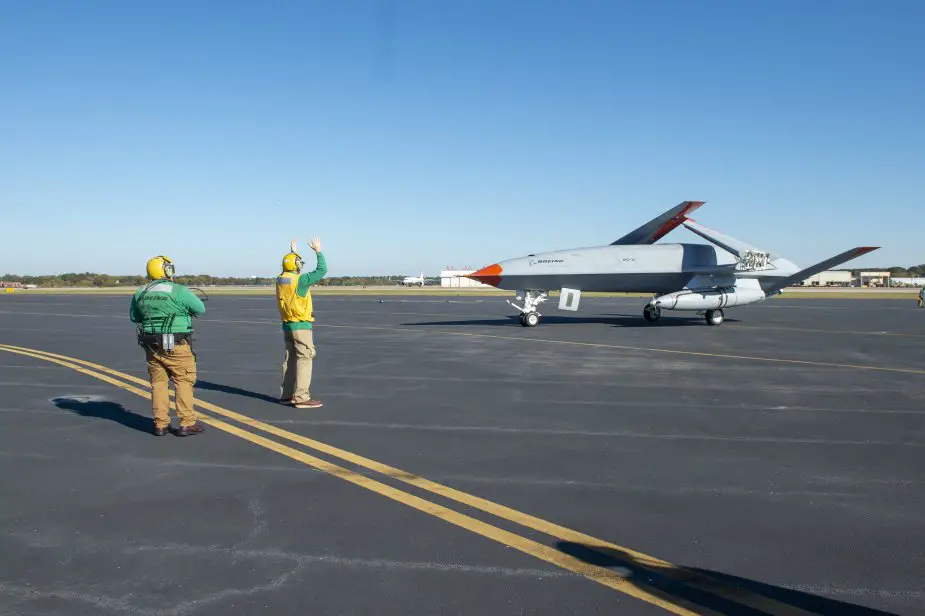According to information published by the U.S. Department of Defense on November 22, 2021, the U.S. Navy and Boeing are completing ground tests of the MQ-25 Stingray test asset at Chambers Field onboard Naval Station Norfolk, Virginia.
Follow Navy Recognition on Google News at this link
 Boeing MQ-25 Stingray Unmanned Aerial Vehicle (Picture source: US Navy)
Boeing MQ-25 Stingray Unmanned Aerial Vehicle (Picture source: US Navy)
The MQ-25 Stingray introduces unmanned aerial refueling and intelligence, surveillance, and reconnaissance capabilities to the air wing that will extend the range, operational capacity, and lethality of the Carrier Air Wing and Carrier Strike Group.
Rear Adm. John Meier, Commander, Naval Air Force Atlantic described that they are using painted lines to section areas of the flight deck to test how the MQ-25 would be able to maneuver onboard an aircraft carrier.
The MQ-25 is the first move toward the Navy’s strategic vision of unified, interoperable networks and systems architecture. It is paving the way for future unmanned systems to be introduced to the air wing and aircraft carrier environment.
The UAS capabilities of the MQ-25 will allow the F/A-18 to return to its primary mission set as well as extend its strike range and enhance maneuverability.
The Boeing-owned MQ-25 recently completed its first aerial refueling of an F-35C Lightning II aircraft, marking the third refueling flight evolution for the test aircraft as a whole. Once operational, MQ-25 will refuel every receiver-capable carrier-based aircraft.
The MQ-25 is intended to be one of the Navy’s fastest major defense acquisition programs to reach initial operational capability.
Boeing's MQ-25 design is powered by one Rolls-Royce AE 3007N turbofan engine delivering 10,000 lbf (44 kN) of thrust; this is a variant of the engine used to power the Navy's MQ-4C Triton.
The aircraft is less stealthy than flying wing UAVs. It does feature a stealthy fuselage shaping, flush inlet to shield engine blades from radar and V-tail.



